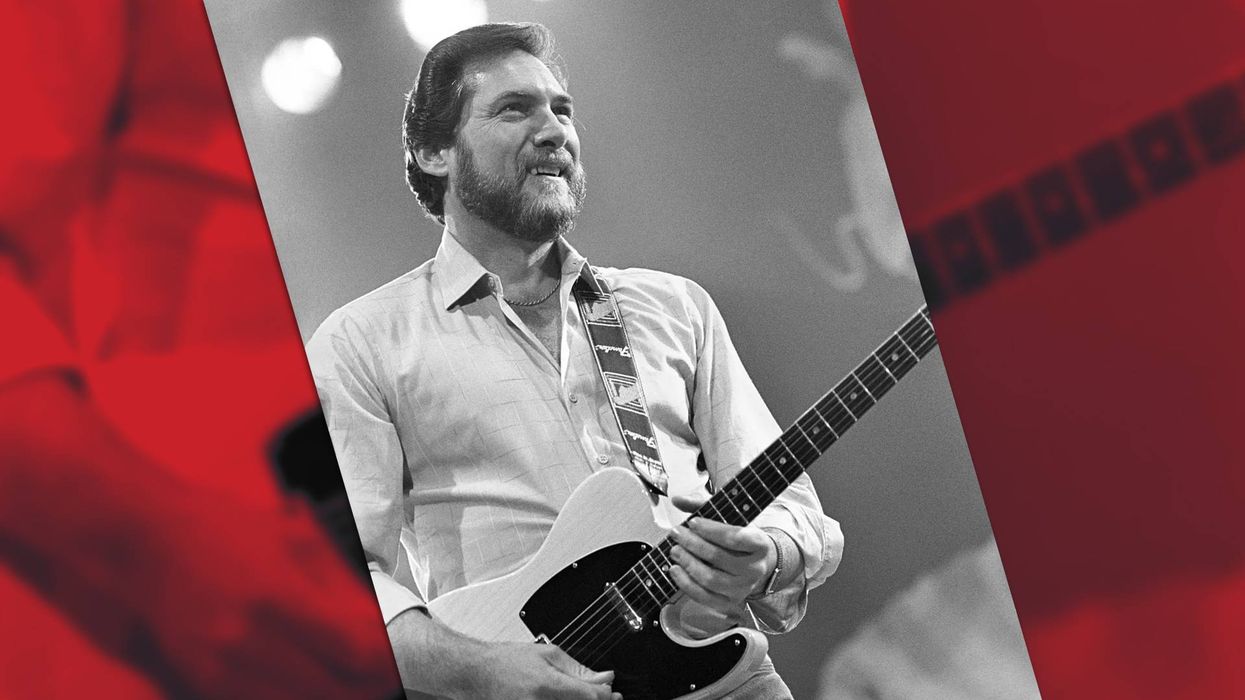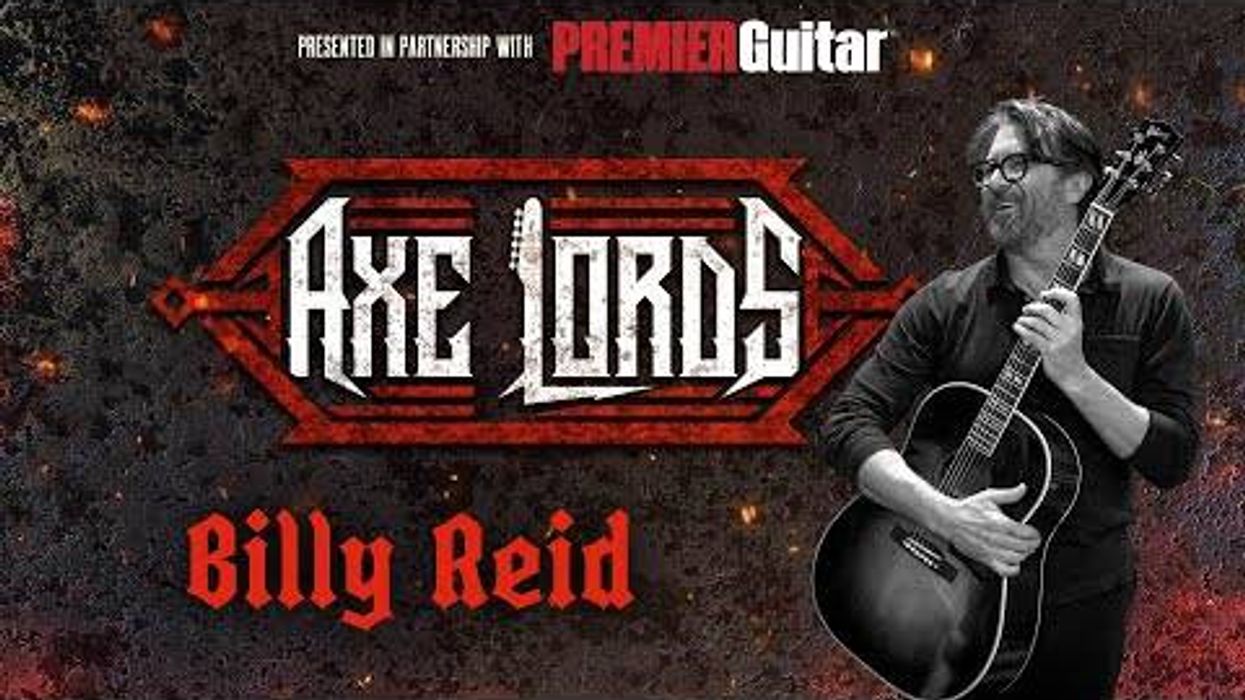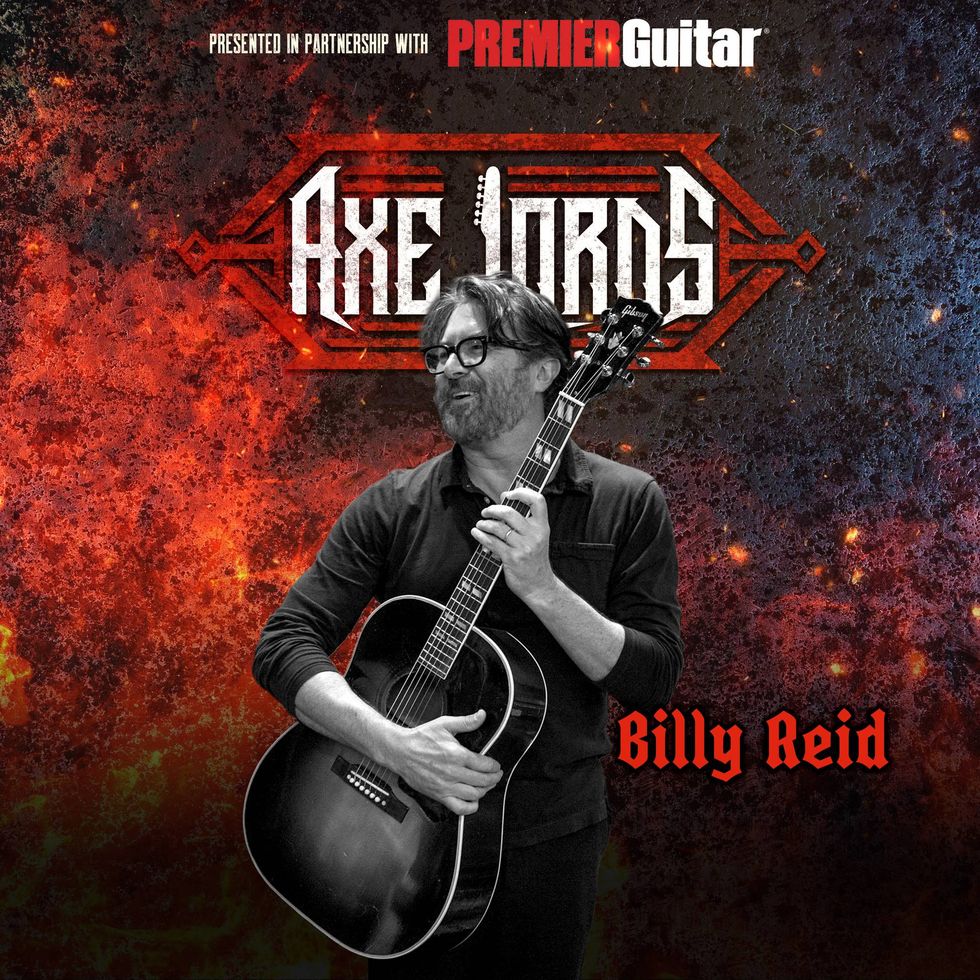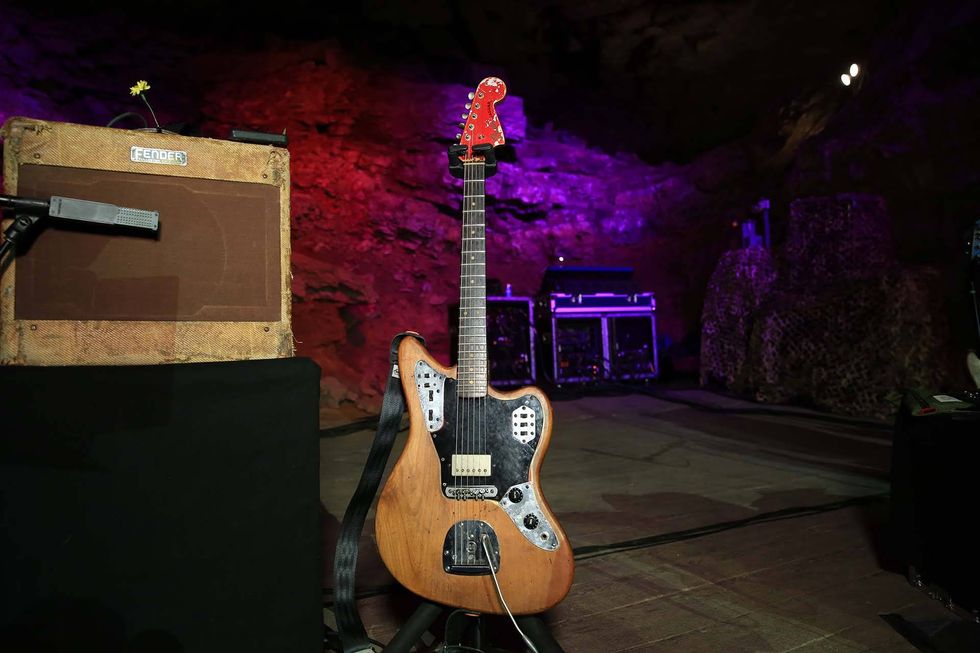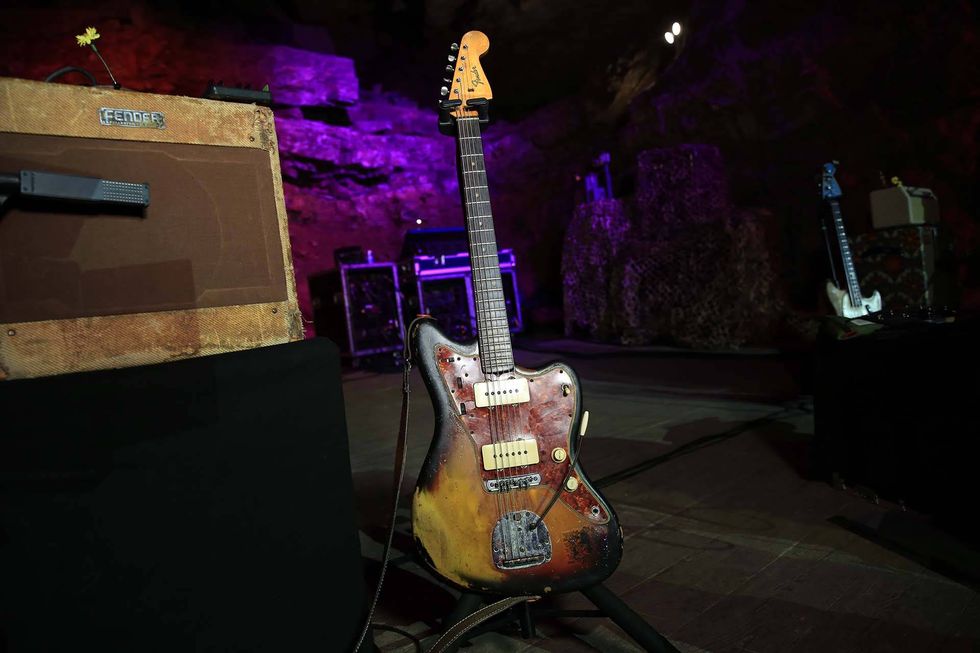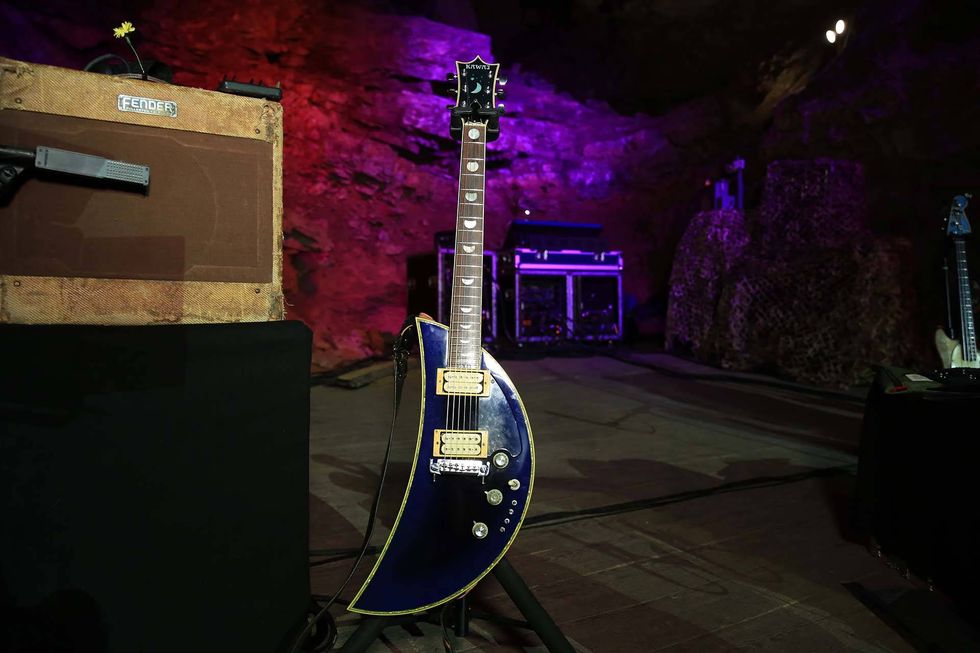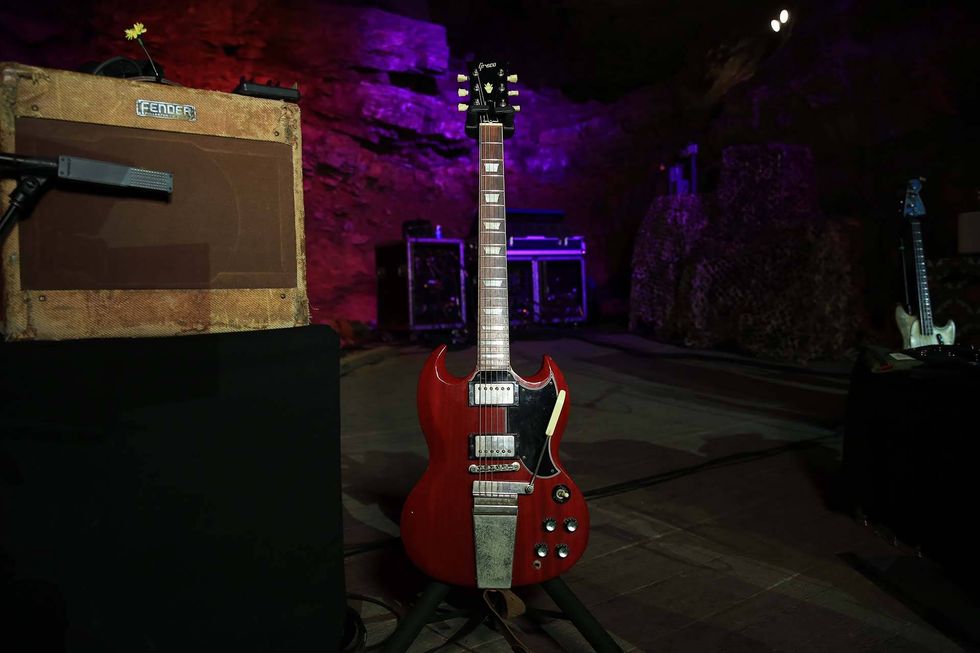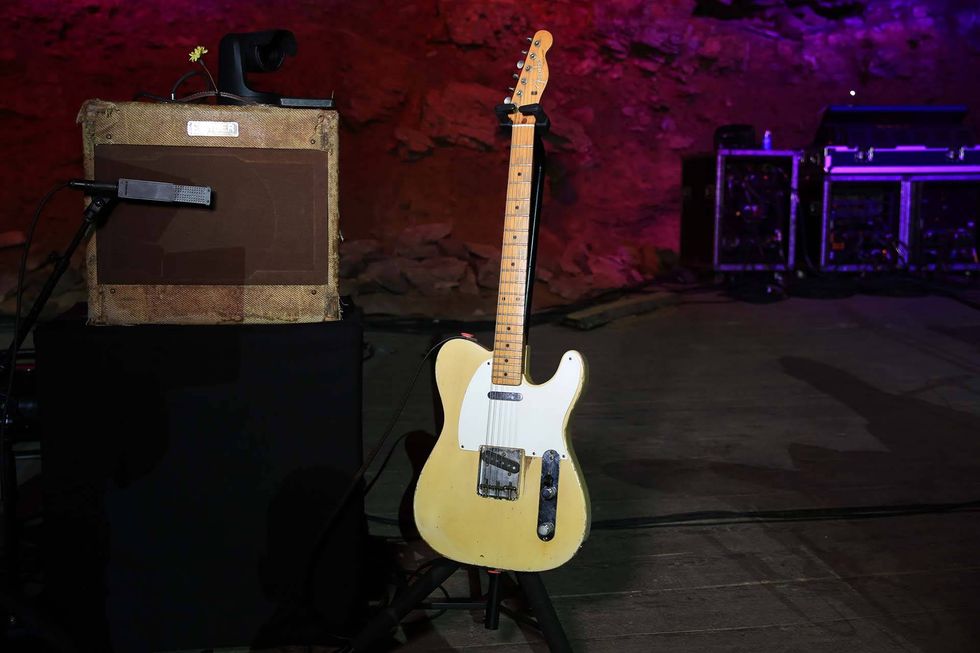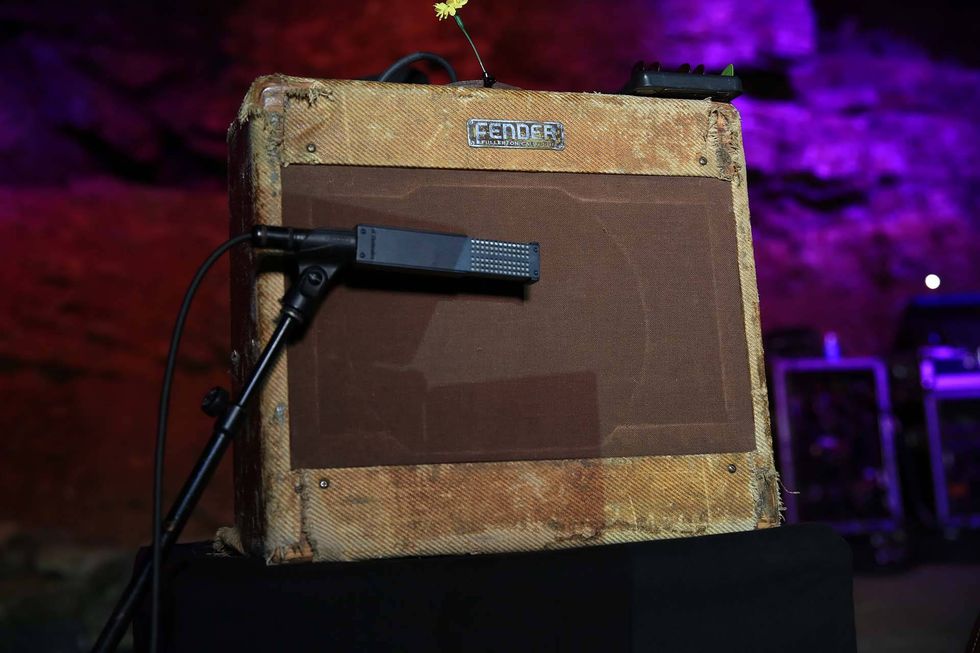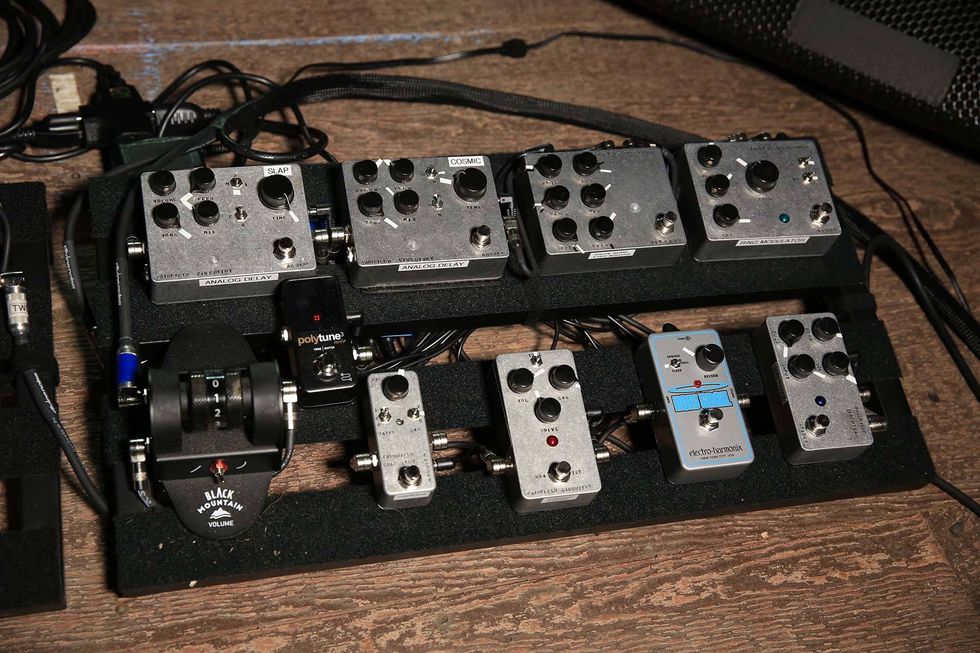The music Rodrigo y Gabriela draw from their nylon-string guitars—Rodrigo Sánchez using a plectrum and Gabriela Quintero approaching the instrument like a hand drum—is not easy to categorize. It’s definitely not flamenco, as many listeners mistakenly identify it, simply on the basis of its instrumentation and rhythmic intensity. Though it’s often frenetic and power-chord laden, it’s not exactly rock either. Maybe it’s best not to label the sounds this guitar duo has synthesized naturally by playing together for nearly a quarter of a century. “Through the years we’ve picked up so many different influences from metal to jazz to flamenco to Cuban to Indian music,” says Quintero. “So we’re just who we are.”
Sánchez and Quintero, both 40, met when they were teenagers at a cultural center in Mexico City, and they’ve been playing together ever since. Initially they wielded electric guitars in a thrash metal band but then were drawn to the nylon-string guitar. They began busking as a duo in Ixtapa, a Mexican beach resort, playing unplugged rock standards by Led Zeppelin, Metallica, and Black Sabbath, but ultimately found it unfulfilling to perform for unappreciative tourists.
Facing stagnation in Mexico, Sánchez and Quintero decided to make a go of it as backpacking musicians. In 1999 they headed to Dublin, a city that purportedly had a lively culture of street musicians. When they got to Dublin, Sánchez and Quintero stuck to what they’d been playing in Mexico—mostly covers of classic rock and metal fare. But then something happened: To flesh out their sound, Quintero began assuming a more percussive role, and at the same time Sánchez started writing new material for the duo. In other words, they turned Dublin’s Grafton Street into a musical laboratory.
Sánchez and Quintero also mingled with traditional Irish musicians, an influence that became especially evident in Quintero’s approach to rhythm. Fortuitously, this led to their careers starting to take off in a global way, when the Irish musician Damien Rice helped them find a manager and then a record deal. By the time Rodrigo y Gabriela released a debut album, re-Foc, in 2002, the duo’s style had begun to gel. Their approach, as well as the scope of their influences, would be further solidified through Rodrigo y Gabriela (2006) and 11:11 (2009).
On Area 52 (2012), Rodrigo y Gabriela revisited compositions from their first two albums in a collaboration with C.U.B.A., a full Cuban orchestra. But Sánchez and Quintero pared things back to two guitars for their most recent effort, 9 Dead Alive, a collection of new pieces that is both more intimate and, true to their roots, rock-oriented. From their studio in Ixtapa, they spoke to Premier Guitar about their long history as a duo and the inspirations and techniques at play on 9 Dead Alive.
Describe your formative musical experiences.
Rodrigo Sánchez: My dad used to have a couple of guitars that he played as a hobby. Although I wanted to be a drummer, those guitars were all we had available at home, so that’s what my brother and I learned. The first time I picked up the instrument was when I was 11, after seeing the first Live Aid concert in 1985. I taught myself and tried to play like Judas Priest on this old nylon-string.
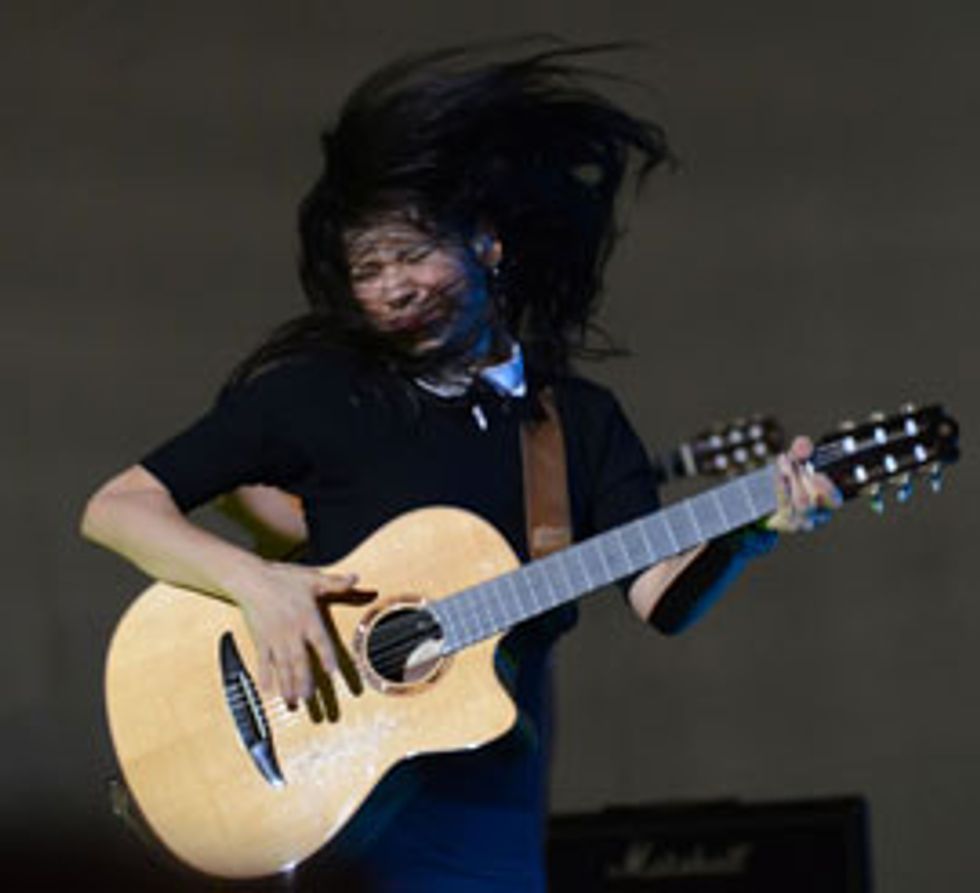
Quintero is shown here playing in April of 2012 at a concert at Philadelphia’s Tower Theater.
Photo by Cathy Poulton.
Gabriela Quintero: I come from a family of music lovers and was privileged to hear great music in the house when I was growing up. No one really played any instruments but my mother had a really big collection of albums—everything from jazz to the Beatles to the Rolling Stones to salsa to boleros to tango to classical. I decided to play the guitar because it’s such a light and easy-to-transport instrument, and you can play so many different styles of music on it. And then I discovered metal—Megadeth, Testament—and I wanted nothing more than to play in a band, loudly.
How do your metal roots feature into your playing today?
Sánchez: They come through everything I do—I never set out to make polite guitar music. The only real difference is now I play acoustic guitar instead of electric. Though this album is more inspired by rock in general than metal, my technique on the nylon-string really comes from a metal place.
Quintero: The elements of metal I’ve always been most attracted to are the intense rhythms and the riffs. Although we obviously don’t use distortion, we often have those sounds in mind when we play the acoustic guitar, and this translates into such a percussive and energetic approach to the instrument.
As nylon-string players, do you have classical backgrounds?
Sánchez: We never had any formal training. We tried to get into the National Conservatory of Music when we were 16, but were both rejected and never tried again. Instead we got together with a bunch of friends and played in a rock band. Ultimately this was probably for the best: With classical training, Gabriela would probably never have dared to do things the way she does.
Quintero: I wish I had a classical or flamenco background, but at the same time I’m happy to have arrived at a unique approach to the guitar.
Gabriela Quintero approaches her guitar percussively, as if she’s playing a hand drum, while Rodrigo Sánchez attacks his nylon string with a plectrum to achieve a more commanding sound. Photos by Jim Mimna.
What did you learn from busking in Ireland?
Sánchez: We learned a lot ... it was like school in a way. For the first time, people really listened to the music—they weren’t getting drunk and talking over it—and we were constantly forced to adapt to new situations. It was a great way to gain experience and confidence, and I would really recommend that all young musicians try such a thing.
Quintero: Ireland’s a very musical country, very alive and progressive, where going out to listen to music is a way of life. Before we moved there we’d been playing at hotels to tourists drinking piña coladas and not really paying attention to the music. Then all of a sudden we were in cold, gray Ireland with our freezing fingers, trying to play for all of these people who were watching us attentively on Grafton Street. Every Saturday, throughout the day we’d play for about 40 minutes, take a little break, and then play for another 40 minutes. We’d be very excited to put new music together and would practice together a lot during the week, up to nine hours a day, refining our concept of the acoustic guitar. Many percussive elements came out of the gig, like using drum ideas to make the guitar sound as if we were an electric rock band. We had so much music going on inside our heads, and in trying to express it, we learned that a lot more things were possible on the guitar than we’d imagined.
How do you feel about your music being categorized as rock?
Sánchez: It might be the closest way to label it, though obviously we don’t have the same instrumentation as a typical rock group. People often think we play flamenco, but they’re totally wrong—obviously they don’t really know what flamenco is. I love flamenco and am friends with some of the great players and love jamming with them. When I get together with Vicente Amigo he might try to show me how to play some flamenco, but when playing with him, essentially I do my own thing, using a pick, and he does his own thing.
Quintero: I don’t really know what our music is. There’s not exactly anything new under the sun. Whether it be in art, cinema, literature, or music, great pieces always bear other influences. So I don’t think we’re totally original, but what makes us different is that we play the acoustic guitar in a nonstandard way, blending two guitars into one sound as if we’re a full band. We do play at rock festivals, but on the other hand, the music is more eclectic than rock. As for flamenco, we don’t even try to play it out of respect to the style. I do have such a love and respect for Paco de Lucía and all those incredible players—and I wish I could play like that—but we must do our own thing.
Tell us about your compositional process—do you work together or alone?
Sánchez: Here’s the way it’s worked since the first album: I write the main melody or riff on my own, and once I think I understand it, I show it to Gabriela. Then when she has done her thing to the music, we both sit with the piece and play it to see what happens. We normally take our time—we don’t write a song in a day—and when we work through new one together, we let it mature on its own and decide where it wants to go.
Rodrigo Sánchez’s Gear
Guitars
Yamaha NTX1200R
Strings and Picks
D’Addario EJ45 Pro-Arte strings
Dunlop Jazz III picks
Gabriela Quintero’s Gear
Guitars
Yamaha NCX2000R
Strings and Picks
D’Addario EJ45 Pro-Arte strings
Quintero: When Rodrigo gives me a little melody, I do take over the rhythm, adding a lot of harmonies and bass lines, things that sometimes influence a melody to change entirely. Then we both work together on the structure of a piece, which involves the longest process of all, even though it’s typically a standard rock form of intro, melody, bridge, and solos. And all of our music is composed from beginning to end—we don’t really improvise within the structure.
What are the secrets to getting the heavy sounds on 9 Dead Alive?
Sánchez: I play with a pick, which is pretty unusual for a nylon-string guitarist. It’s so much easier to play techniques from the rock side of things—like palm muting and power chords—this way than it is with the fingers. With her percussive approach, Gabriela has to work the whole body of the guitar. Translating these sounds live requires the guitar to be outfitted with multiple piezo pickups, like Yamaha has done for us in our signature models. Another thing about playing live is that we try to make the guitar sound as big and natural as possible, often without effects. This is something that’s quite complicated, so I leave it to the sound guy to handle.
Quintero: I might not play flamenco, but I think that a lot of my heavier percussive sounds are inspired by the flamenco approach to timekeeping. Another element is that when we were living abroad we were playing a lot of traditional Irish tunes, and that music often includes a drum called the bodhrán. I learned how it was originally played with a stick, and I translated some of these moves to the guitar. In general, I wouldn’t say there are any secrets to my style—I can teach anyone how to play it if they have enough time. It just takes a lot of determination, plus hours and hours of practice and breaking things down slowly, to be able to produce complicated rhythms using nonstandard approaches on the guitar.
What was it like to record the album?
Quintero: In recording the album, we decided to go without any producer. We wanted to do it ourselves, just two guitars and two microphones, and no effects. It was important to get rid of the metronome, to get a relaxed feel, and from the two guitars we went for a crystal clear sound, warm like candlelight, a very organic sound from the wood and the strings.
Sánchez: We’ve been through periods where we’ve been very anal about recording, using metronomes so that the timing is absolutely tight, so that we come in exactly on the right spot on overdubs. But this time we approached the album with a different kind of process—we wanted it to feel fresher, like more of what we do live or when we’re just playing in a room together. We’re so happy with the sound we achieved for the album. It’s really aggressive, yet clean and natural sounding.
The album’s single, “The Soundmaker,” is inspired by Antonio de Torres Jurado, the father of the modern guitar, and other tracks are inspired by historical figures from Harriet Tubman to Fyodor Dostoyevsky. How did you channel these inspirations into music?
Sánchez: For this album we actually wrote the music first and then chose the titles based on what the composition suggested to us—just like many people choose to do when naming a baby. We tried to tell a story with the titles, and we wanted the dedications to draw attention to things listeners might not know about. Torres, for instance, had a very sad story. He shaped the modern Spanish guitar, but ended up impoverished, and we wanted to bring that to peoples’ attention.
YouTube It
Rodrigo y Gabriela play a private concert in Dublin, the city where the duo’s signature sound came together.
In this performance, Rodrigo y Gabriela give a Led Zeppelin classic a facelift.
NPR Music’s Tiny Desk Concerts is a natural venue for Rodrigo y Gabriela’s intimate compositions.




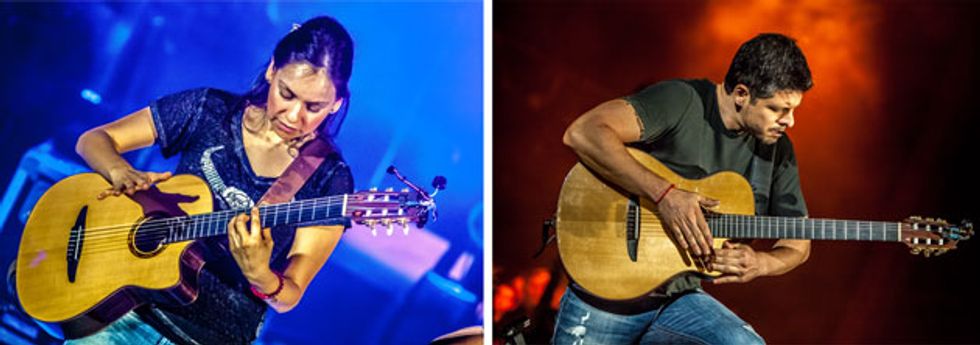
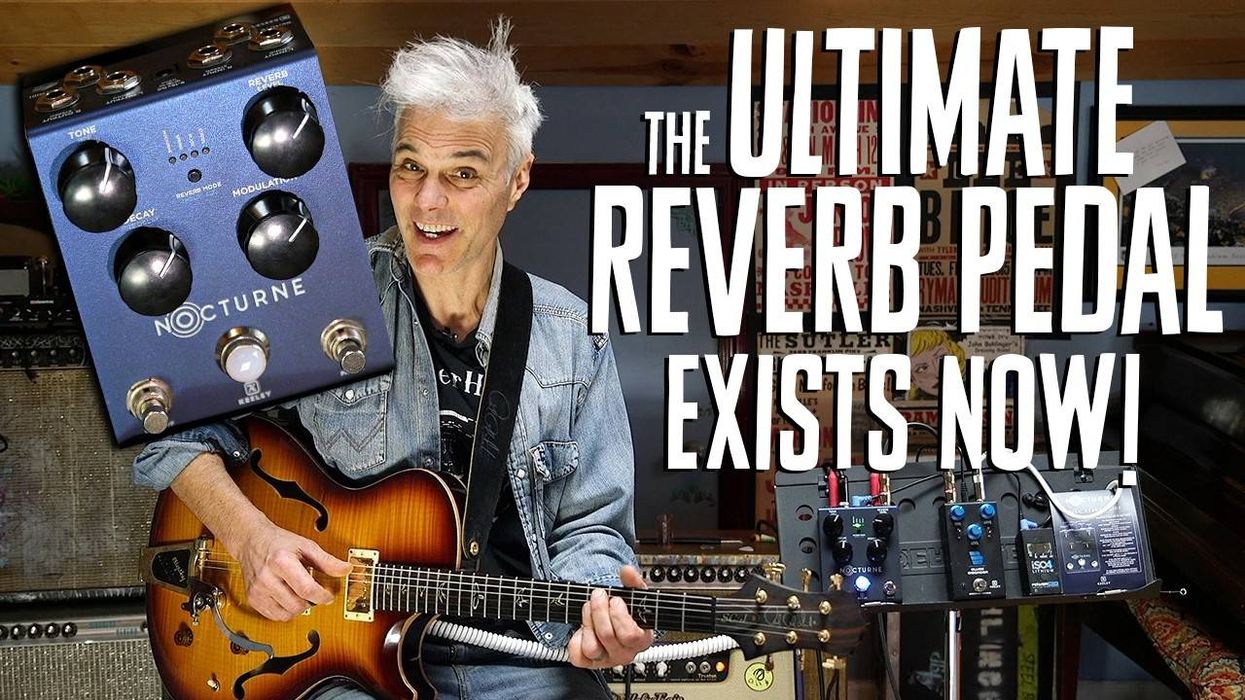
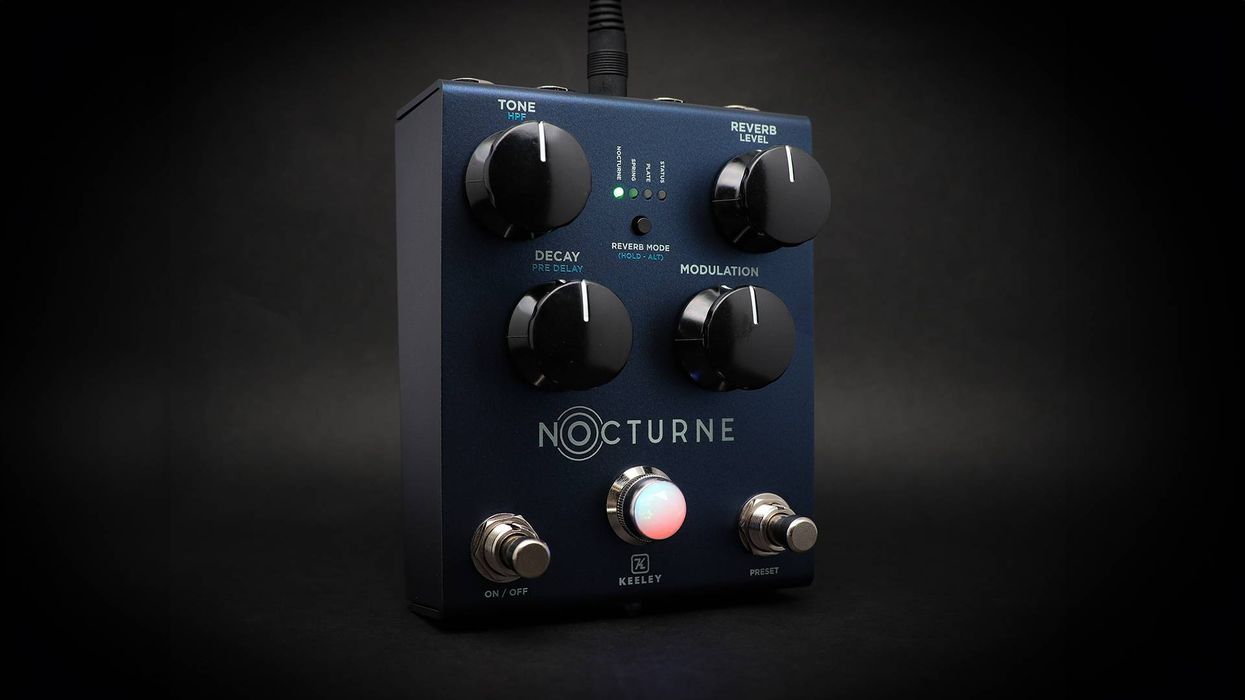
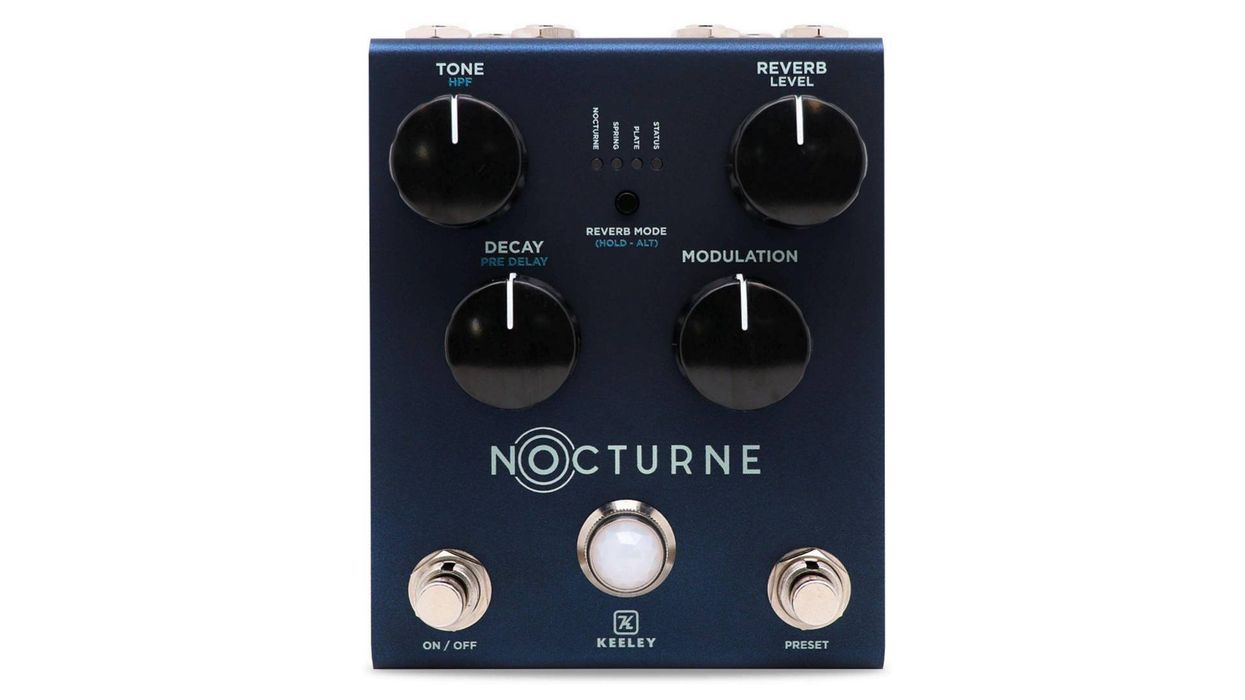
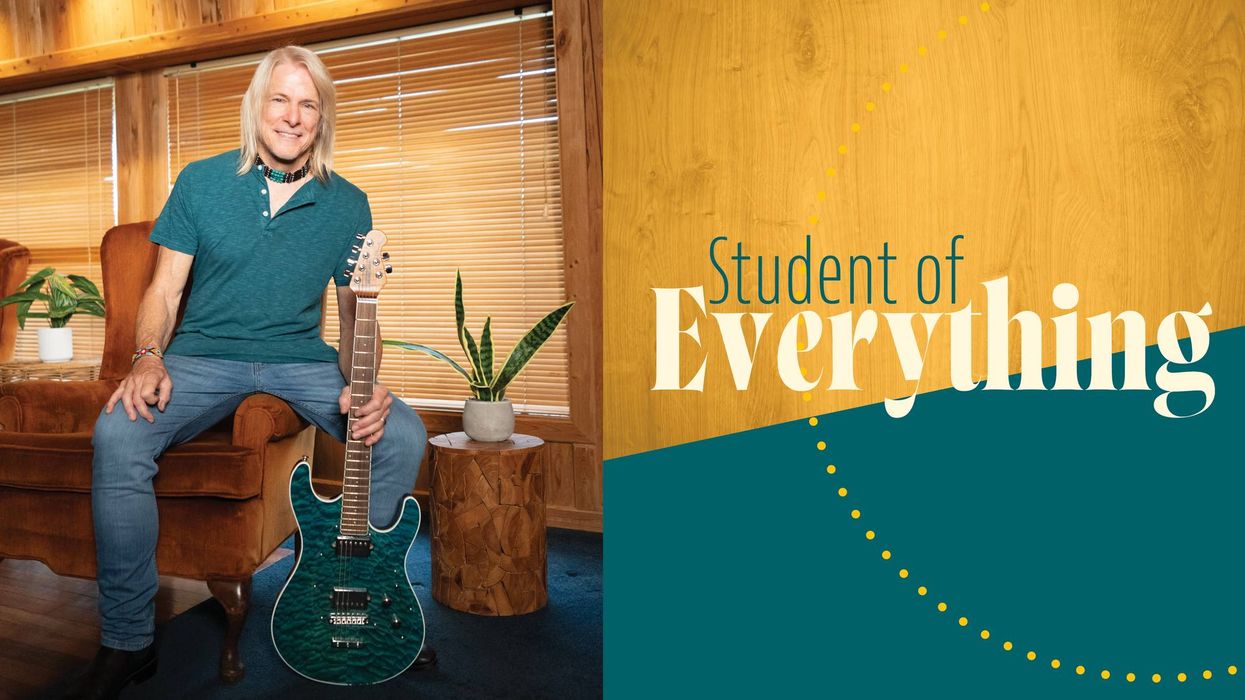
![Rig Rundown: Russian Circles’ Mike Sullivan [2025]](https://www.premierguitar.com/media-library/youtube.jpg?id=62303631&width=1245&height=700&quality=70&coordinates=0%2C0%2C0%2C0)












